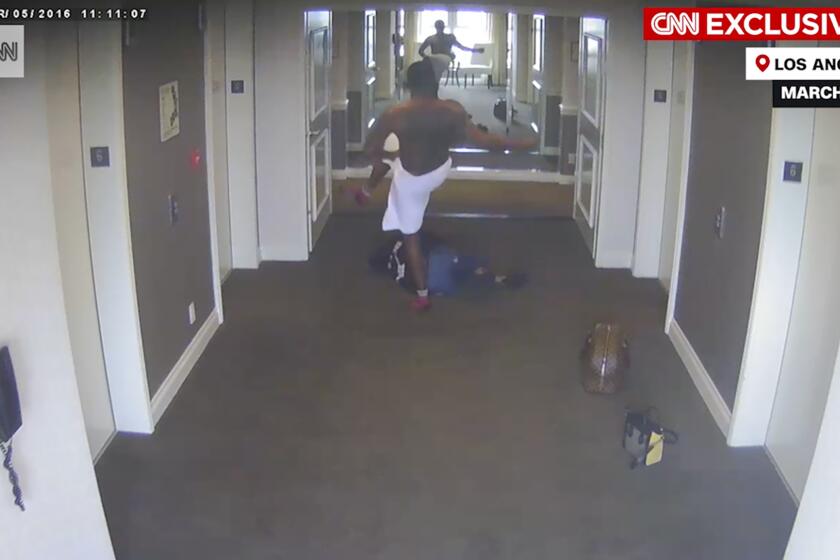Rhythmists Polish Up Swing Era’s Rare Gems
Mora’s Modern Rhythmists have the look and the manner of a band tapped into the recent swing-revival fad. And when the curtain went up for their program at CSUN’s Performing Arts Center on Sunday--hosted by “The Swingin’ Years” radio show disc jockey Chuck Cecil--the tuxedo-clad players could easily have been kicking off a dance set at the old Palomar Ballroom.
But bandleader Dean Mora, despite his ebullient manner and black-and-white wingtip shoes, had other plans in mind. Steering clear of overly familiar swing-era repertoire--”In the Mood,” “String of Pearls,” “Sing, Sing Sing,” etc.--he offered a concert sparkling with intriguing, often unfamiliar items.
Some of the pieces had never made their way to commercial release, such as an arrangement of “Anything Goes” tracing to a 1935 set of Benny Goodman numbers recorded solely for radio station use.
Others were almost as elusive: Duke Ellington’s 1935 “Bird of Paradise,” for example, was recorded by Jimmie Lunceford rather than Ellington, and here was performed by the Rhythmists in an arrangement by the veteran orchestrator Spud Murphy (who was in the audience); a slightly risque (for 1935) tune from the Dorsey Brothers’ repertoire, “Annie’s Cousin Fanny”; Ellington’s “I’m Satisfied,” with the original Ivie Anderson vocal sung by band singer Kayre Morrison.
Toward the end of the afternoon event, Mora showcased an even more compelling item: “Reminiscing in Tempo” from 1935, Ellington’s first extended work, impressively rendered by the Rhythmists in its full, 13-minute form.
The musicians did a splendid job of re-creating a far-ranging lineup of material (all of it tracing to the decade between the late ‘20s and late ‘30s), emulating the style of the period without sacrificing their own musical individuality.
Mora, on piano, and drummer Larry Wright were especially effective in focusing the rhythm section, with Chris Tedesco and Jim Ziegler on trumpet, Dave Bryant on trombone and Matt Germain on tenor saxophone adding swing-inspired soloing.
But the real fascination of the program centered on the window that was opened into a colorful era in American jazz and popular music.
And Mora and his Rhythmists deserve an enormous amount of credit for reminding us that classic 20th century jazz and swing deserve to be heard, appreciated and preserved with the same care and consideration accorded to three centuries of European classical music.
More to Read
The biggest entertainment stories
Get our big stories about Hollywood, film, television, music, arts, culture and more right in your inbox as soon as they publish.
You may occasionally receive promotional content from the Los Angeles Times.










